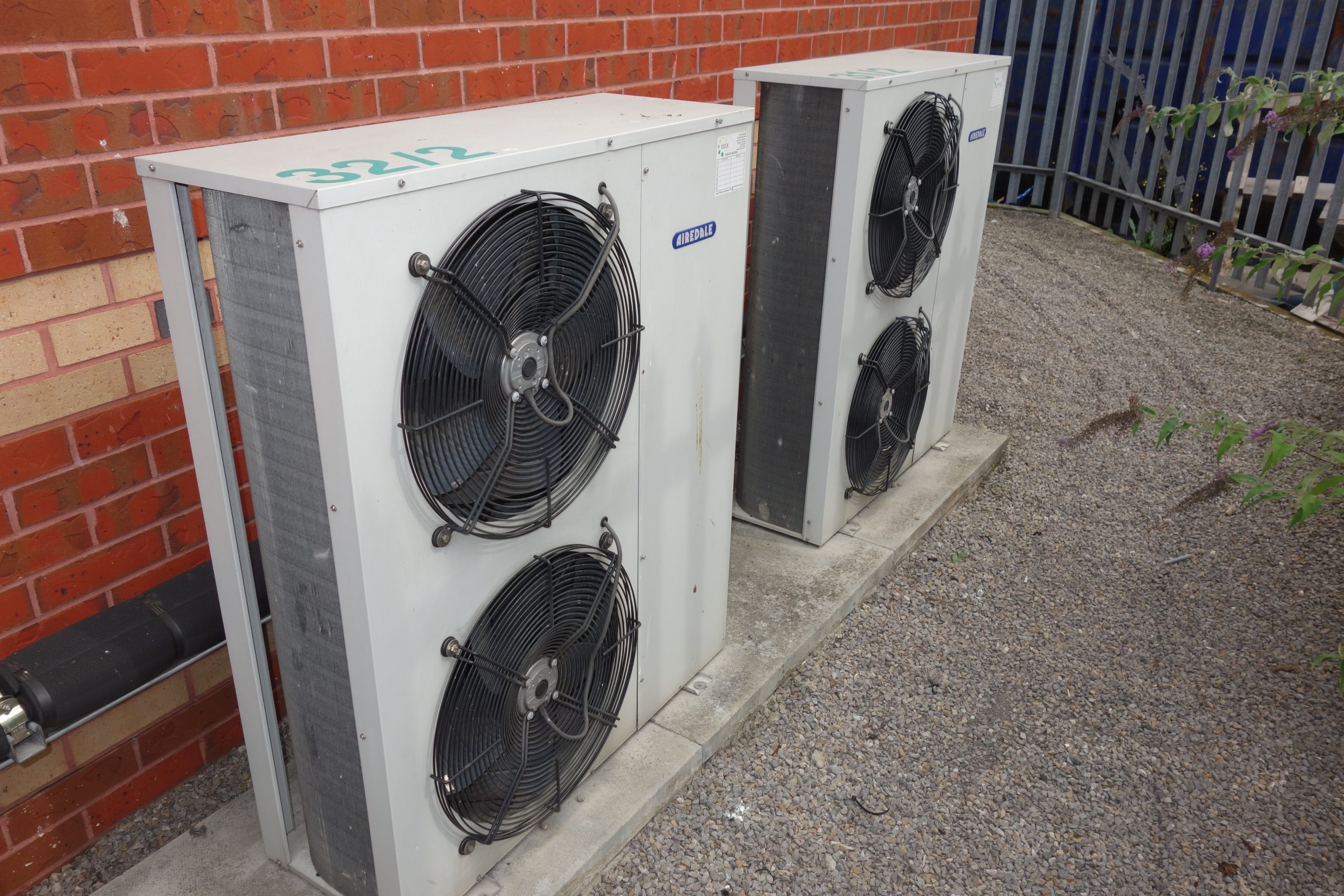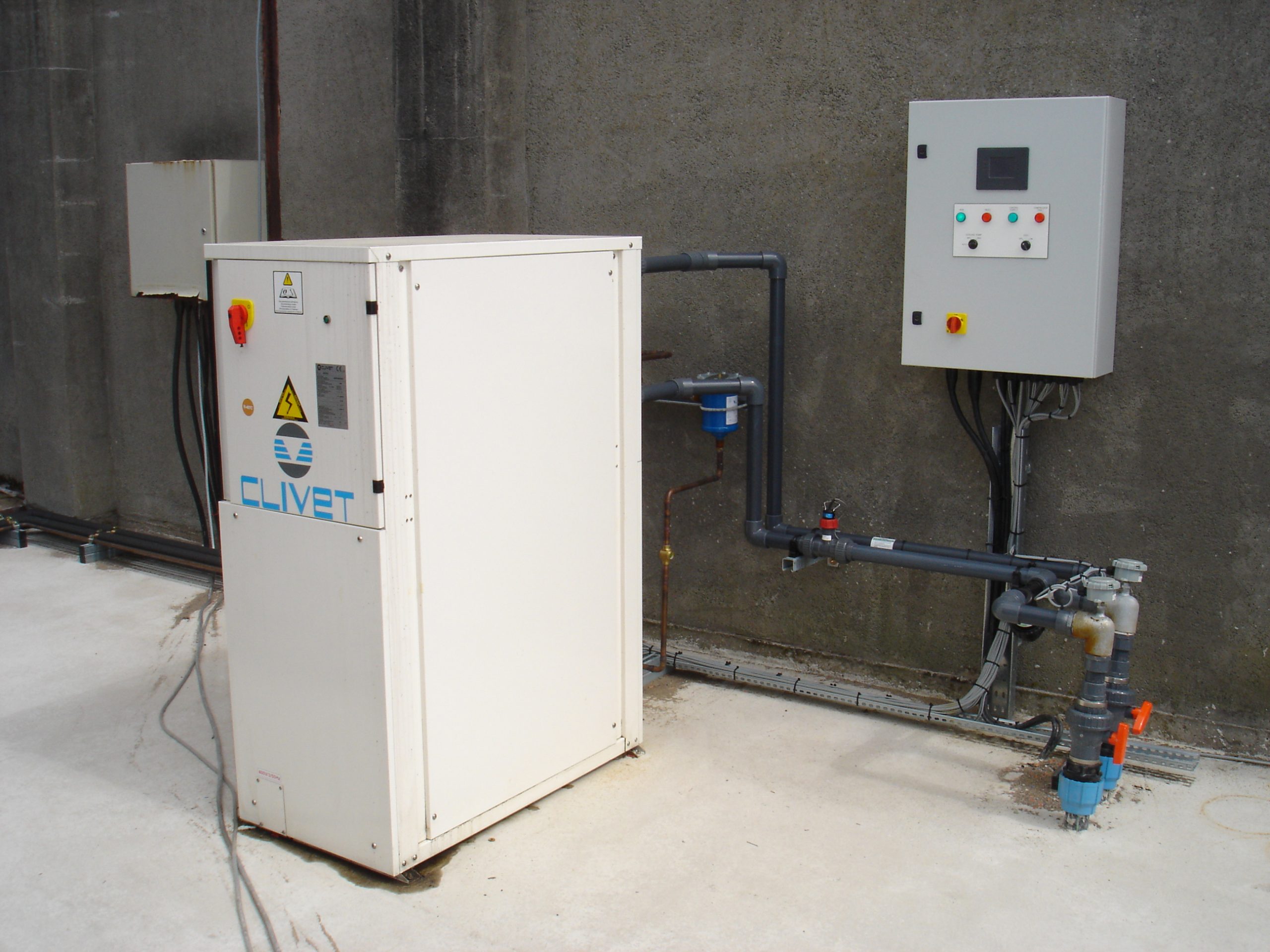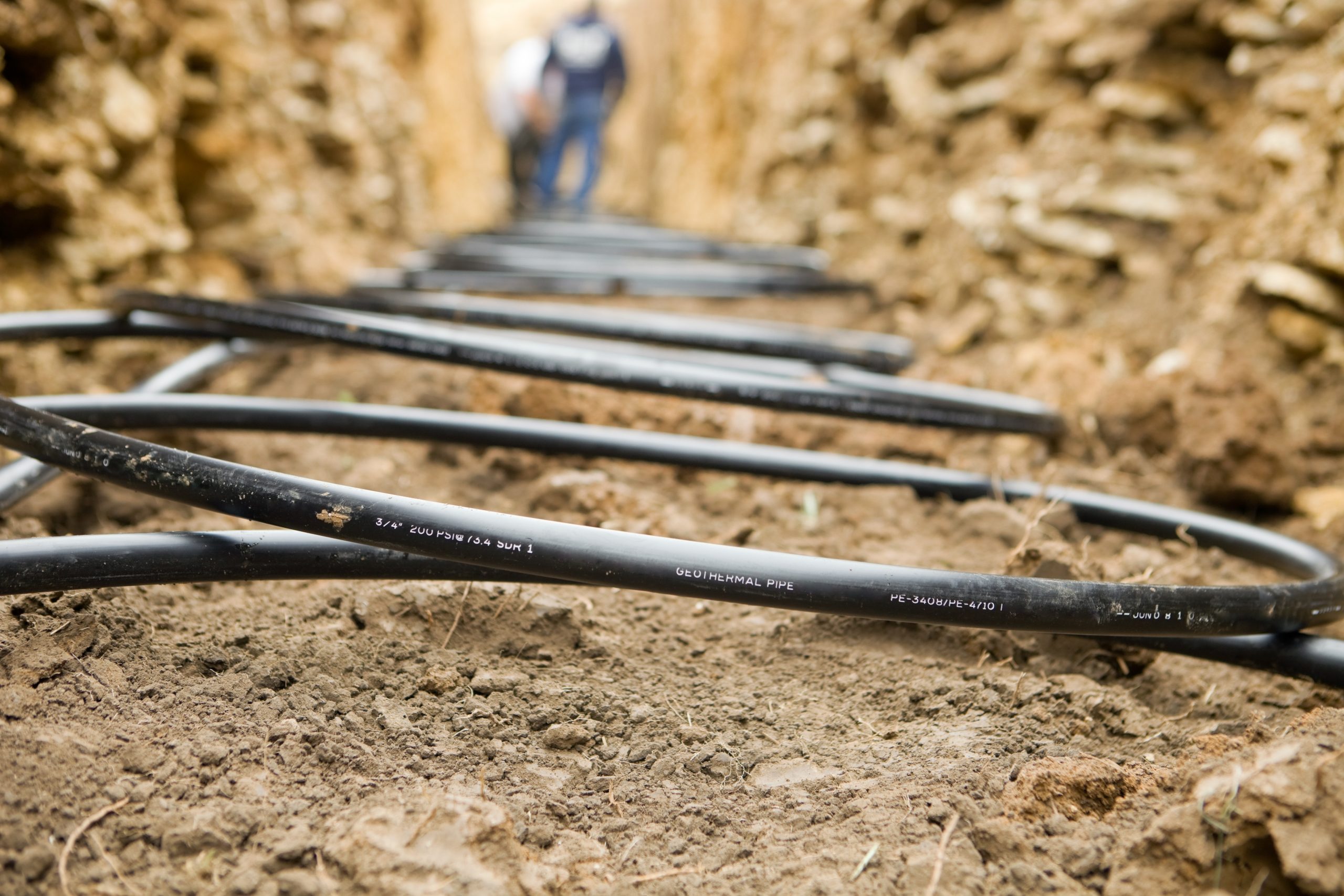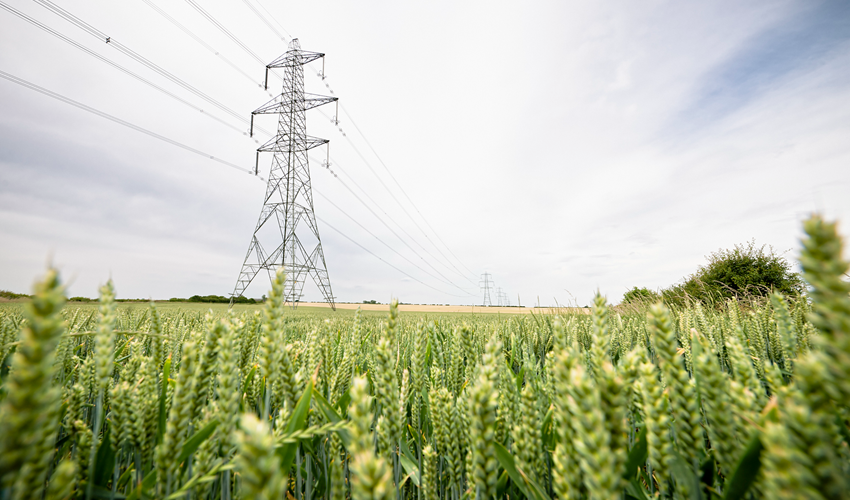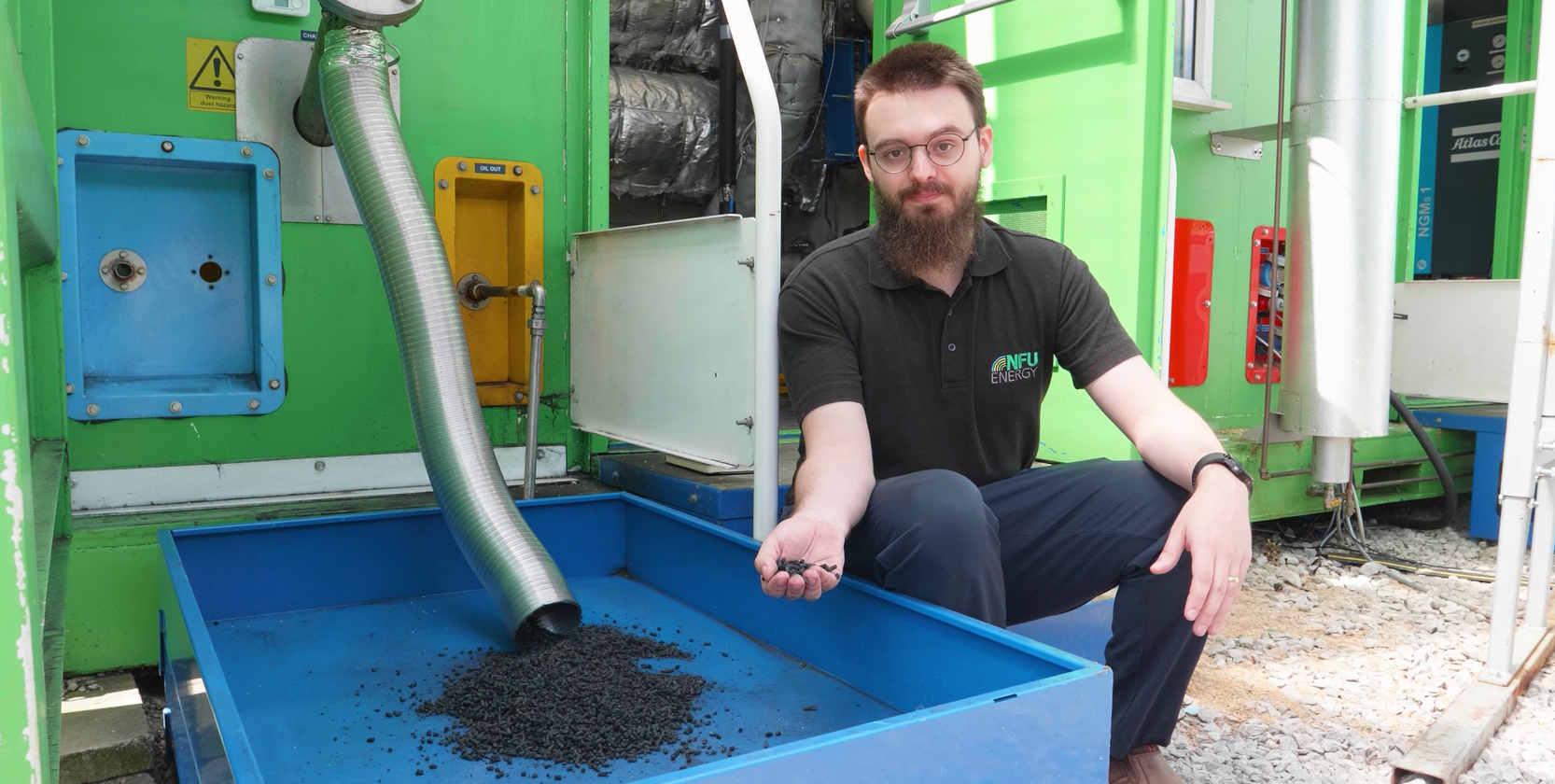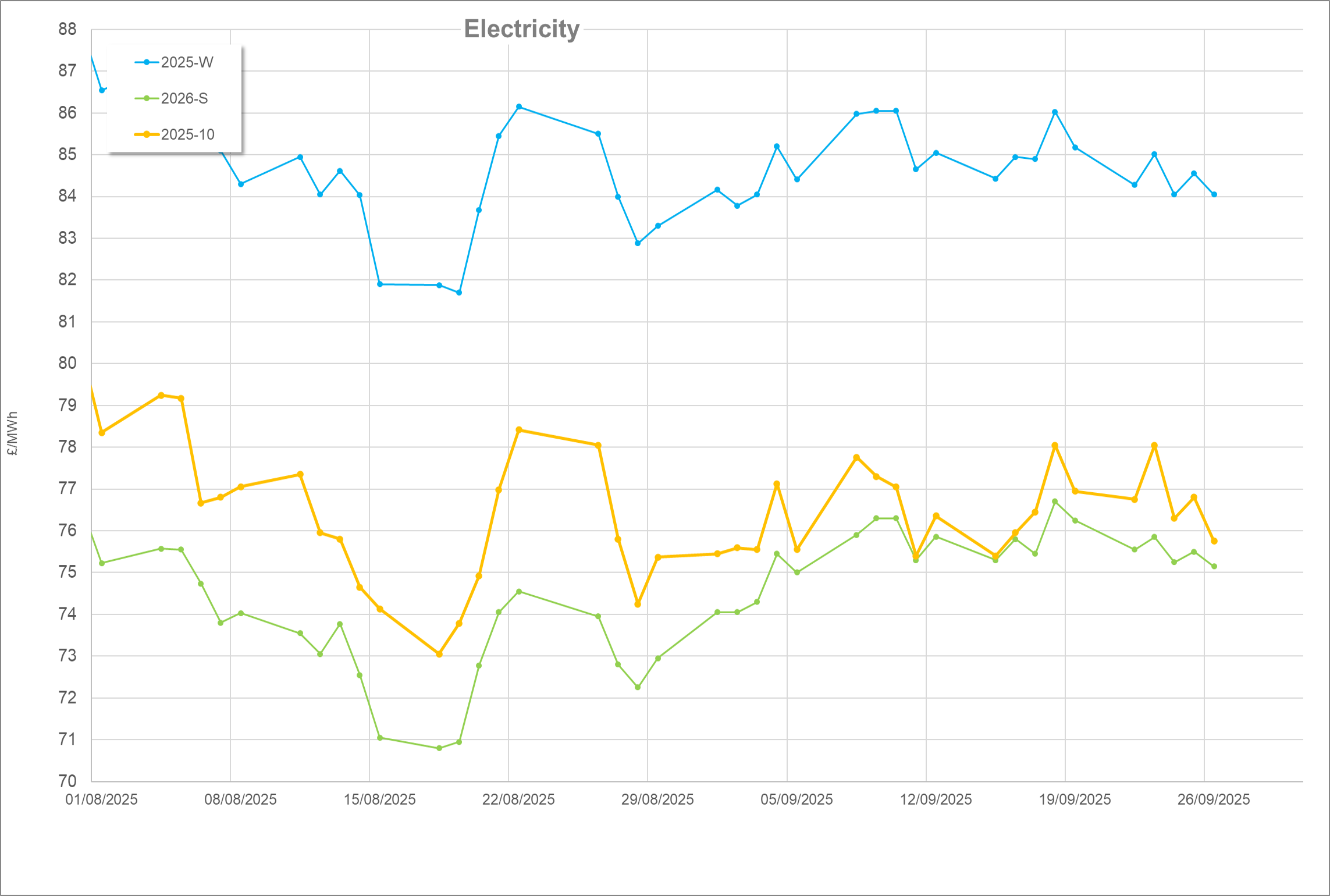There is a lot of thermal mass in the ground, allowing the temperature to remain stable at around 10°C at depths as shallow as 1m. Ground Source Heat Pumps (GSHPs) use this consistent temperature to maintain a high seasonal efficiency.
As depths increase, that stable temperature tends higher due to nuclear decay of materials deep underground. Temperatures up to and beyond 80-90°C can be reached at depths around 2,000m or more, depending on the geology. The energy available at these depths is commonly exploited using boreholes.
To give an indication of typical temperature bands with depth:
15-150m, 10-15°C,
150-500m, 15-30°C,
500-1,000m, 30-50°C,
1,000-2,000m, 50-80°C.
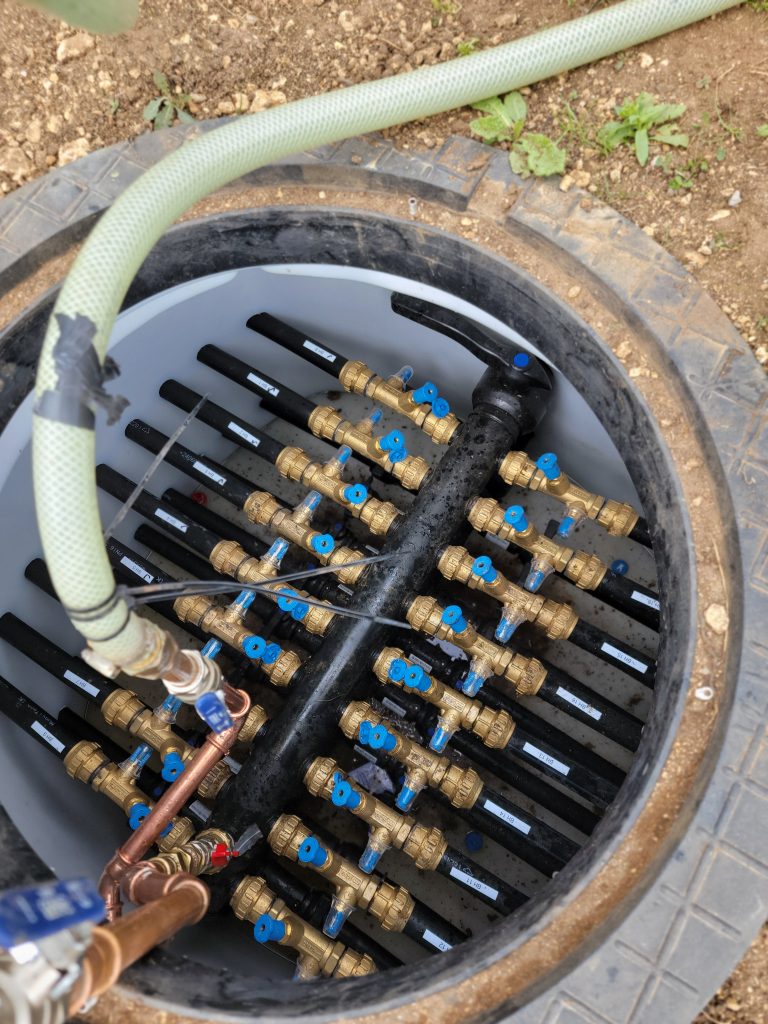
Certain geological formations allow for steam extraction, and therefore electricity production. These systems tend to be at depths of several thousand metres.
As well as enabling heat to be transferred from the ground, boreholes can be used to transfer energy back into the ground for later use. This type of heat storage typically requires a large underground aquifer to hold the heat.
Geothermal heating
Geothermal heating in broad terms comes in two types, driven by the available resource, desired operational temperatures, and budget:
- Direct (deep) geothermal (either ‘open loop’ or ‘closed loop’)
- Open: Hot ground water is pumped up through the borehole in an ‘open loop’, where it goes through a heat exchanger and is pumped back underground.
- Closed: Working fluid (water, saline, etc.) is pumped down the borehole in a ‘closed loop’, heated, and returned to the surface where it transfers heat to a heat delivery circuit.
- No heat upgrading required, extraction temperature is equal to delivery temperature.
- Assisted (shallow) geothermal,
- The same process as direct geothermal, however, the final temperature is raised (heat upgrading) before going through the heat delivery circuit.
- This can be done via heat pump, i.e., a borehole Ground Source Heat Pump (GSHP), or any other heating method, depending on desired operational temperature.
The benefit of a borehole GSHP can easily be understood by the following: if 15°C can be obtained with a 100m borehole, a heat pump can very efficiently raise this to 55°C. Extracting 55°C directly from a borehole would instead require depths in excess of 1,000m.
The largest consideration to make is the geology at the site of the potential installation. Heat transfer, stability, rock type, porosity, etc. are all key aspects which will inform how deep and how difficult the borehole will be to drill, and, therefore, its cost. It is common for drilling to constitute the largest single cost across the project. A map of the ongoing projects in the UK (as of 2023) is shown in the “The case for deep geothermal energy – unlocking investment at scale in the UK, Decarbonisation and Resource Management Programme Open Report”.
Secondly, environmental consent is important to obtain. Again, this will vary depending on required depth, but abstraction and discharge licences, environmental permits, planning permissions, and drilling consent will all be required.
Installation of a deep geothermal system is a long process with long lead times, from desk-based evaluation, modelling, shallow exploratory drilling, deeper test drills, final system design, to eventually drilling the well and installing supporting infrastructure.
An additional consideration is the limited number of UK installations. There are very few operational deep geothermal systems in the UK, the most notable being The Eden Geothermal Project and United Downs. Therefore, the expertise to enable these projects may be limited.
Finally, capital cost is a large consideration. The Financial Times reported that the Eden Project system cost in the region of £24m and has capacity to deliver 1.4MW of energy. Although this is a demonstration site and costs reflect that, drilling to these depths will always carry a high cost.
The United Downs project cost around £18m with hopes to deliver 3MW of electricity output. Although cheaper than the Eden Project system, costs remain high.
It is worth noting that both these systems are particularly deep, around 5km. More shallow and low temperature boreholes would likely be significantly cheaper. The standing cost for drilling rigs can be around £40,000/day, meaning the cost quickly escalates if drilling is not quick.
Geothermal storage
Separate from deep geothermal heating/power systems, more shallow boreholes (30-300m) can be utilised for thermal storage.
Geothermal storage comprises a set of boreholes and a heat pump. The principle is that heat can be extracted from the boreholes during winter, upgraded in temperature using a heat pump, then energy is transferred back into the borehole during summer; either excess heat from another generator, or by providing cooling to a different space. This is enabled by the geology of the ground surrounding the borehole (e.g., an aquifer), which can have very good heat capacity.
The concept can be complimented by other systems, such as solar thermal which produces most of its heat during summer months, or Combined Heat and Power (CHP) systems (including biogas) which tend to have a high load factor and/or run summer months for CO2 production. Additionally, the waste heat from large refrigeration plants can be diverted into geothermal storage.
Storage temperatures between 30-50°C are common, which is why heat pumps are employed to upgrade the heat before use. However, low-temperature systems (as low as 10°C) and high-temperature (as high as 90°C) are in operation globally.
Publication of the performance of existing systems suggests that geothermal storage systems can recover between 30-76% of their input energy (although it is suggested 70-90% should be achievable), with systems needing 3-6 years of operation before performance stabilises. During this time, more heat is injected into the ground than can be extracted later.
Again, the most important consideration for geothermal storage is the local geology. The presence of an aquifer, certain rock formations, or high-speed ground water, will affect the viability of energy storage and the depth required to drill.
Another important consideration is operational temperatures. If paired with a high-temperature generator, then either a high-temperature storage system must be designed, or hot water mixed down for low-temperature storage. In this case, the volume of storage (i.e., number and/or depth of boreholes) will be different.
The UK logistics chain for the drilling of required shallow boreholes is more developed compared with deep geothermal wells, but costs remain high. The highest of these costs (40-50% of total system cost) are borehole drilling.
As part of GrowSave’s 2024 study tour, we visited an ornamental site growing freesias, who had implemented a geothermal storage system. Two boreholes were drilled around 170m depth and 300m separation, with one hot (25°C) and one cold (6°C). The heat delivery temperature into the glass is low at 35°C, which has been raised via heat pump. These temperatures are dictated by the government; however, they have conducted trials which showed higher temperature storage led to greater overall losses, meaning these limits are sensible.
One stipulation is that they must remove the same volume of heat that they introduce into the ground across the year, meaning that a careful balance must be made. The system is designed to deliver both summer cooling and winter heat by extracting from different boreholes, making the balancing act easier.
Further reading
British Geological Survey – Evidence report supporting the deep geothermal energy white paper: The case for deep geothermal energy – unlocking investment at scale in the UK:
https://nora.nerc.ac.uk/id/eprint/535567/1/report_OR23032.pdf
UK Energy Research Centre – Seasonal Storage of Heat in Boreholes – A technical note covering borehole thermal energy storage in the UK:
Seasonal Storage of Heat in Boreholes | UKERC | The UK Energy Research Centre
The Eden Project Geothermal – Deep geothermal heating system supplying their biomes, commercial greenhouse, and ancillary buildings:
United Downs Geothermal – Deep geothermal heating & power pilot site:
IGSHPA – High temperature borehole thermal energy storage – a case study:
https://www.academia.edu/61414078/High_temperature_borehole_thermal_energy_storage_A_case_study

